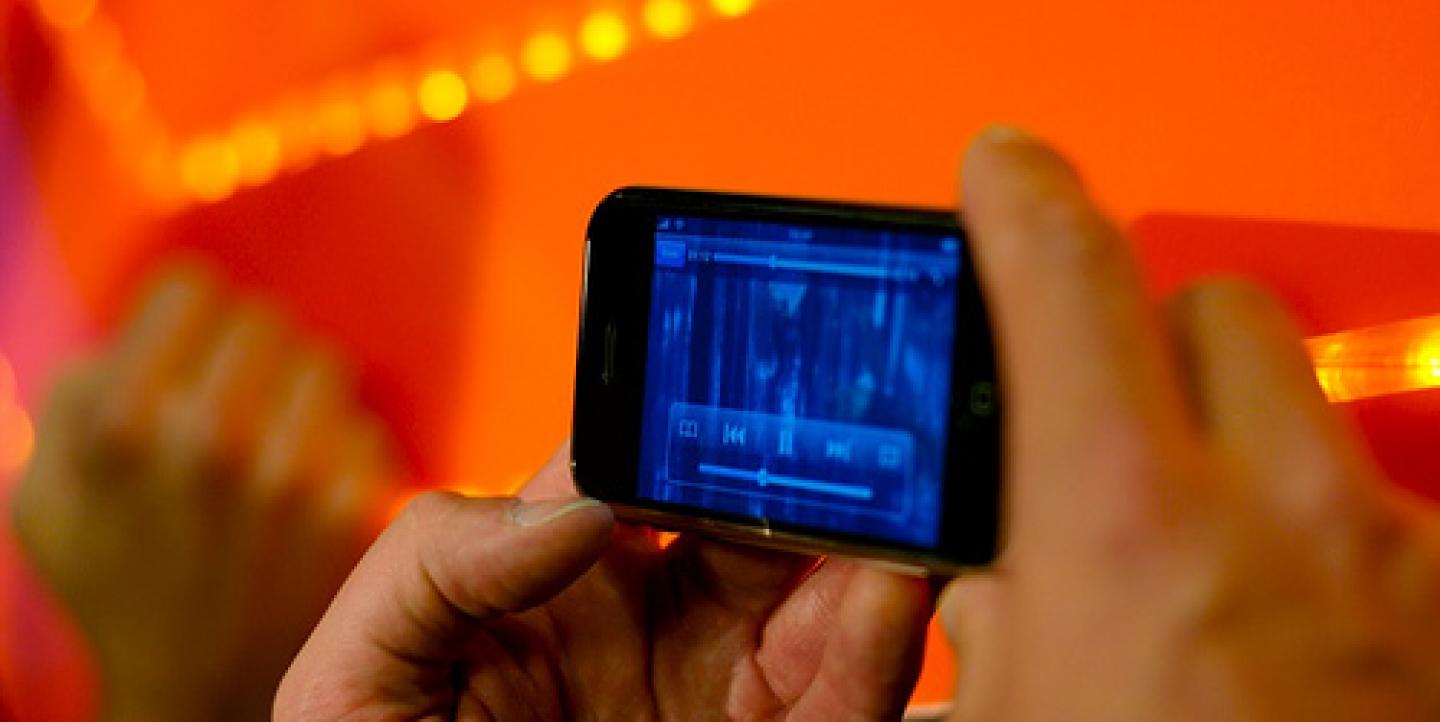Journalists looking for a streamlined way to shoot, edit and publish short videos can turn to Videolicious, an iOS app with an Android version on the way.
Along with newsrooms like The Washington Post, New York Daily News and the L.A. Times, reporters can use the app to make either narrative photo essays with voice-over, or a broadcast-style video blending interviews with b-roll of still photos or video clips. With only four steps toward making a video, the app focuses on simplicity but produces results equal to traditionally produced professional videos.
To create a narrative video, start by choosing shots from your media library on your device. If you're using still photos, you can edit the images by cropping or centering the photo. Since video is essentially a horizontal medium, being able to crop vertical images is key.
Make sure to select your b-roll shots from the media library in the order you plan to use them in your video, because the shots will scroll up the screen as you're recording your narrative.
Now it's time to tell your story. You'll have the option to open the forward-facing mic and camera to record your voice or a stand-up style shot. This is where the multitasking begins, as you'll be recording your narrative and inserting your b-roll at the same time in a talk-and-tap fashion. Tap the screen to start recording yourself, and simultaneously tap the thumbnails of the pictures or videos you selected from the media library when you want them to appear "over" your voice or self. It's best seen in action here:
If you're opting to make a newsmaker-style video, you can record interviews with a rear-facing camera outside of the app, and then import those interviews to the app to make your video. You can trim your interview clips and add a lower third (though this option is only available with certain accounts). Then weave in your b-roll as before, in a play-and-tap fashion.
You can also include a reporter intro or outro, adding context to the beginning or end of the piece.
One reporter from the Washington Post used Videolicious to create this short clip that was weaved into the paper's Post TV coverage, featuring videos that are more traditionally produced with a video camera and a desktop editor.
You can add license-free theme music and a filter to your final video. Choose whether you'd like to save it as SD or HD video (HD is recommended but SD would better suit environments without good cell coverage or if you need to file the video pronto), and then save your video. You can share your video on YouTube, Facebook or Twitter, but the video will live on the Videolicious platform.
If your newsroom opts for an Enterprise account, which features the greatest level of customization and is suited for large newsrooms, you have the ability to save the video to an internal content management system and have the video appear directly on your site. Personal accounts are free, but are limited to 1-minute-long videos, 10 b-roll shots per video and storage for 20 videos. You can get a business account for US$60 a year or a business plus account for US$120 a year for greater customization.
A few current drawbacks: You only get one shot to get the narration right. Since this means you can't stop and regroup if you slip up on a word, it's best to practice your script aloud a few times before filming yourself. You can also only import one piece of a-roll, or an interview, per video. These two limitations are going to be the first things addressed in future iterations, Videolicious direct of video evangelism Alan Haburchak said in a recent Poynter NewsU webinar.
During the webinar, Haburchak offered a few quick tips for shooting video with the app:
-
Always shoot horizontally. This may seem elementary but instinct for most people is to hold the phone vertically, so it's worth noting.
-
Hold the camera steady. Again this may seem obvious, but with a streamlined app focused on simplicity, wobbly pans and zooms will make your editing process more difficult.
-
Add an external mic for better sound quality. A built-in, omnidirectional mic will pick up a wider range of sound.
-
Keep videos between 60-90 seconds. Video length varies from topic to topic, but this length of time is usually the "sweet spot," he said. "Anything longer than that and you’re losing at least half your audience."
- Keep intros between 10-20 seconds. Follow the approach you might for writing a good story lede, "long enough to draw somebody in but not long enough to make it boring," he said. "You want to get to the meat of your content. You're trying to provide context and draw the viewer in."
IJNet Editorial Assistant Margaret Looney writes about the latest media trends, reporting tools and journalism resources.
Image CC-licensed on Flickr via Holger Eilhard.

